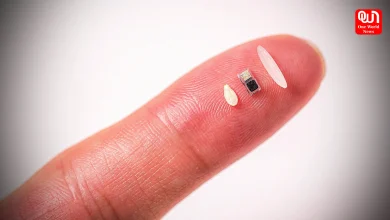
Build Your Own Phone – Google Ara
Is your phone too slow? Is your camera not good enough? Battery life too low?
Don’t you just sometimes wish you could configure your own phone? Picking the best of this and the best of that create something that fits your needs. Google yet again lives up to its reputation of being the pioneer of the latest and the newest technology.

Google Ara Modules
With the intention of grounding this idea into reality Google launched the revolutionary Project Ara. Project Ara is the name given to describe the “open hardware” platform for constructing modular smartphones. This platform would be inclusive of a framework that holds modules of a variety of choices like extra battery, display and keyboard. It will also give the users an option to swap the malfunctioning modules and/or upgrade the modules ensuring better efficiency of the smartphone.
Spearheaded by the Advanced Technologies and Projects Team within Motorola Mobility, the beta release of the Project Ara is scheduled for 2015.
Google has designed it to cater to about 6 billion people at first and intends to sell a starter kit where the bill of materials is US $50 which includes a frame, display, battery, low-end CPU and Wi-Fi.
The structure is built using modules inserted into the endo-skeletal frames, commonly known as “endos” which are relatively inexpensive so that users can spend more money on the right components that fit their choice. The “frame” is the only component in Ara constructed by Google which connects all the modules together.

Project Ara Module @ Google ATAP Source –Google ATAP Images
Currently, there are two frame sizes offered – “Mini” and “Medium”. The Mini frame is roughly the size of a Nokia 3310 while the Medium frame is approximately the size of LG Nexus 5. Though, they also have the “Large” frame about the size of Samsung Galaxy Note 3, in store for the future. These frames have built in slots on the front as well as the back for different modules.
This new technology has been called as “the most exciting thing to happen to smartphone hardware” as the varied modules provide not just regular features like speakers and cameras, but also specialized features like laser pointers, Pico projectors, night vision sensors, receipt printers, gaming controller buttons etc.
The frames also have the amazing “hot swapping” technology. This basically creates the provision to replace the battery in the device without having to turn it off. Great news for the awaiting customers is that the enclosures of the modules are 3D printed providing the user the ability to customize their own kind of enclosures.
These modules will run on a modified version of Android Lollipop 5.0 and would be available at the official Google Store as well as third party stores. The default setting will allow for only official modules, however, with minor software settings unofficial modules would also be enabled. Users can also avail the option of upgrading to 3G and 4G radios as opposed to what the basic package offers that is the Wi-Fi technology.
With the option of replacing every part of the phone to configure different kinds of phone, opens up a whole world of exciting possibilities, especially for the developers. In an exclusive statement given to Time by Paul Eremenko, the leader of Project Ara, he states, “The question was basically, could we do for hardware what Android and other platforms have done for software? Which means lower the barrier to entry to such a degree that you could have tens of thousands or hundreds of thousands of developers as opposed to just five or six big (manufacturers) that could participate in the hardware space.”
Google Ara is the next big thing and will revolutionize not just the technology but also create newer spaces and vicissitudes for talented developers in the market. The agency of “choice” is what Google has based their newest innovation which could very well transform the smartphone experience.
Have a news story, an interesting write-up or simply a suggestion? Write to us at
info@oneworldnews.com







